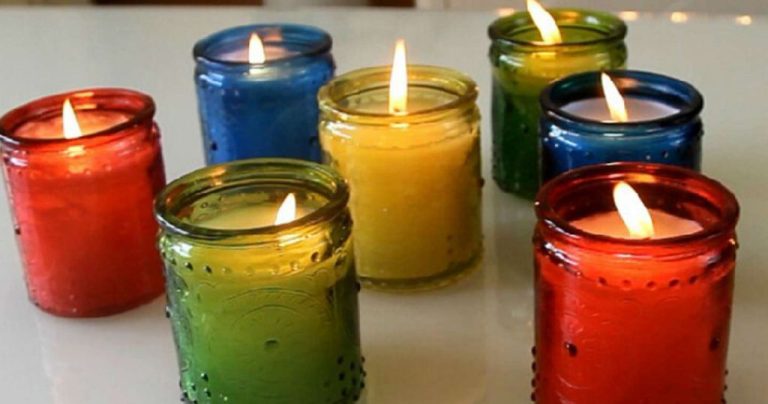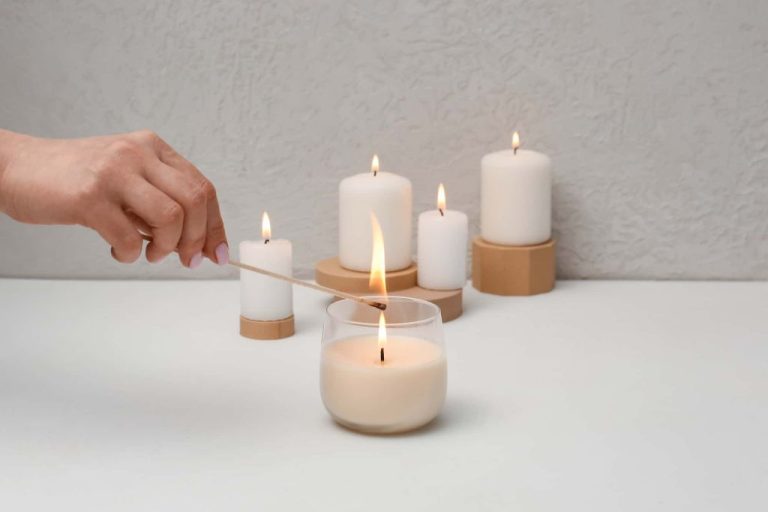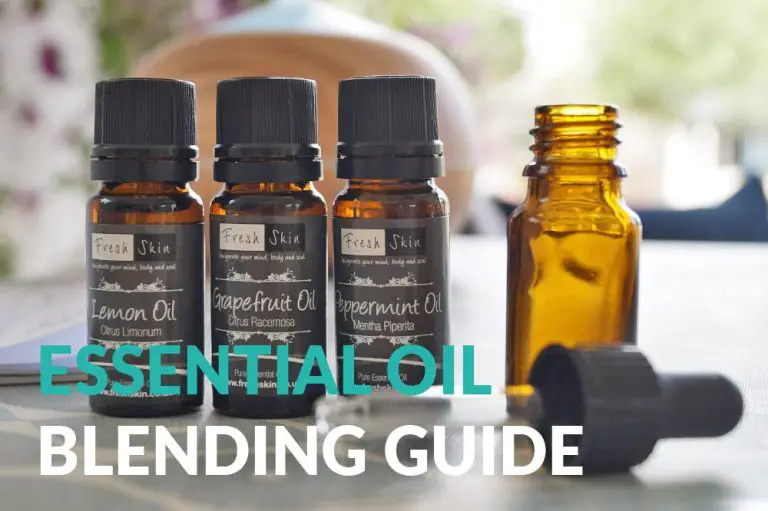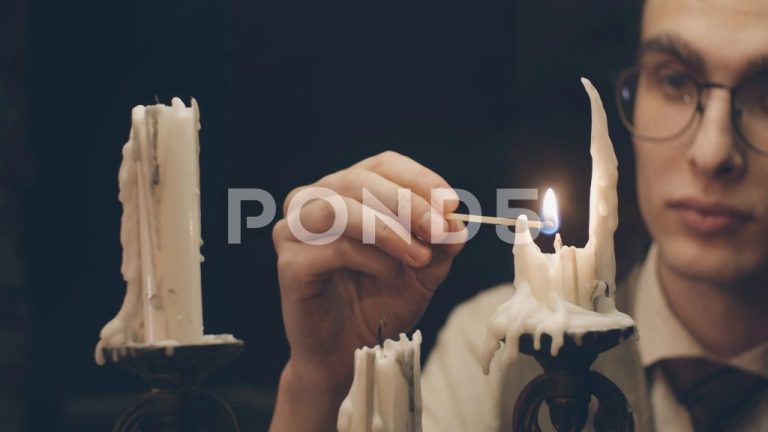Can You Make Candles In Old Glass Jars?
Repurposing old glass jars into homemade candles is a fun, creative way to reuse ordinary household items and make something new. The concept allows you to avoid waste by finding another use for jars, and it enables you to customize candles to your exact preferences. Making candles yourself gives you control over the wax blend, fragrance, and look. With some simple materials and basic steps, those empty jars collecting dust on your shelves can be transformed into beautiful, functional candles you’ll be proud to display and gift.
This guide will walk through the entire candle making process using upcycled glass jars. We’ll cover tips on selecting and preparing jars, choosing waxes and scents, adding decorative touches, safely pouring and cooling the wax, and best practices for getting the most burn time. You’ll learn just how easy and rewarding it can be to give used jars new life as stunning candles.
Benefits of Repurposing Jars
Repurposing old glass jars to make candles provides many benefits. From being environmentally friendly to cost effective, reusing jars is a great option for candle making.
By repurposing jars that would otherwise be thrown away, we reduce waste and our impact on the environment. Reusing materials is an environmentally sustainable practice. Making your own candles in repurposed jars allows you to make use of materials you already have rather than purchasing new.
Recycling glass jars is also very cost effective for candle making. The jars and glass containers can often be obtained for free or sourced inexpensively from thrift stores, yard sales, or your own home. This saves money compared to purchasing new candle jars and containers. The raw materials for making candles, like wax and wicks, are relatively affordable.
Finally, repurposed glass jars often provide beautiful and aesthetically pleasing vessels for homemade candles. The variety of sizes, shapes, and colors of recycled jars makes each candle unique. The light from the candle flame shines through and reflects off the glass beautifully. You can create one-of-a-kind candles that make great gifts.
Types of Jars
There are several common household jars that can be repurposed for candle making:
Mason jars
Mason jars are very versatile for candles as they are designed to withstand high temperatures for canning. They come in a variety of sizes and often have nice straight sides that show off candle designs (Source).
Spaghetti sauce jars
Spaghetti sauce jars have interesting sloped shoulders that provide a unique look. Just make sure to clean off any sauce residue. The wider mouth also makes these easy to fill (Source).
Jelly jars
Jelly jars, also known as mason jars, work great for beginner candle makers as they tend to have straight sides and standard lid sizes. The glass is also durable for high temperatures (Source).
Pickle jars
Pickle jars make an unexpected candle vessel. Just be sure to wash thoroughly to remove pickle odors. The tapered shape provides visual interest.
Jar Preparation
Before using old glass jars to make candles, they need to be thoroughly cleaned, have any labels removed, and be sterilized. Here are some tips for preparing used jars:
Cleaning: Make sure to remove all traces of wax. Fill the jar halfway with hot water and let it sit for a few minutes, then pour out the water. The hot water will melt any remaining wax, which can then be poured out. Repeat as needed until the wax is fully removed. You can also use a plastic spatula to scrape off any stubborn wax remnants [1].
Removing labels: To remove sticky residue left from labels, fill the jar with hot soapy water and let soak for 10-15 minutes. Then use a plastic spatula or your fingers to scrape off the label and glue. Repeat soaking if needed to fully remove the label [2].
Sterilizing: After cleaning and removing labels, sterilize the jars by washing in hot, soapy water or running through the dishwasher. Allow to fully dry before using for candles.
Choosing Wax
There are three main types of wax that can be used to make candles in glass jars: paraffin, soy, and beeswax. Each has its own properties that are important to consider.
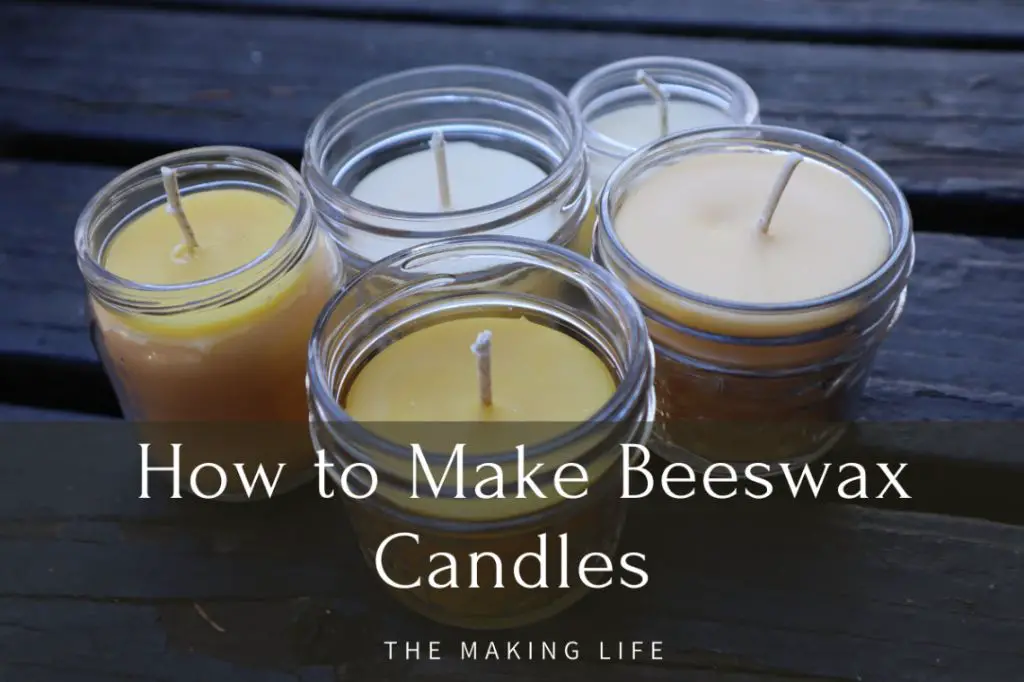
Paraffin is a petroleum-based wax made from crude oil. It’s typically the most affordable option and has a high melting point, making it ideal for jars candles. Paraffin allows fragrance oils to disperse evenly and gives candles a smooth finish. However, some find the natural scent of paraffin unpleasant. This wax also releases more soot than other options when burned.
Soy wax is made from hydrogenated soybean oil. It’s a renewable and environmentally-friendly natural wax. Compared to paraffin, soy wax has a lower melting point and doesn’t hold scent as strongly. The natural look and feel of soy candles is appealing to many. Soy wax has a cleaner burn with less soot.
Beeswax is secreted by honey bees to build honeycomb cells. Of the three, beeswax has the highest melting point. It has a pleasant natural honey aroma, but its scent can compete with added fragrances. Beeswax candles have a classic appealing look, with a natural finish and gentle burn. However, beeswax is typically the most expensive option.
Consider the properties of each when selecting wax for your repurposed glass jars. Soy wax or a soy-paraffin blend are good options if you prioritize an eco-friendly candle. Those focused mainly on beautiful ambiance may prefer working with the classic elegance of beeswax.
Adding Scents and Colors
Adding scents and colors to your candles can allow you to customize and personalize them. There are two main ways to add fragrance and color – using essential oils and candle dyes.
Essential oils will provide a lovely fragrance to your candles naturally. You’ll want to use about 1-2% essential oil per pound of wax. Start with 1% and test the scent strength before adding more. Some popular options are lavender, lemon, and peppermint essential oils. Be sure to choose essential oils specifically made for candle making rather than regular aromatherapy oils (citralictherapy.com/blog/the-10-best-essential-oils-for-candle-making/).
For coloring candles, liquid candle dyes are the best option as they are designed to mix well with wax (helloglow.co/how-to-color-candles/). Use wax-safe candle dyes rather than food coloring. Start with just a few drops of dye per pound of wax and add more as needed. Too much dye may clog the candle wick. Popular colors are blue, green, yellow, red, and purple. White candles can be achieved with titanium dioxide powder.
When adding both fragrance and dye, add the dye first while the wax is still liquid. Stir thoroughly before adding the essential oils. Use restraint with scents and colors, as less is often more when it comes to handmade candles.
Wick Selection
Choosing the proper wick is crucial for a well-burning candle. The wick acts as the fuel delivery system, bringing wax to the flame. You’ll need to consider the wax type and jar diameter when selecting a wick.
For candle making, most wicks are made from braided cotton or paper-cored cotton. Cotton wicks are excellent with wax and provide a bright, full flame. The wick diameter should match the diameter of the jar – a wick that is too small will drown and struggle to stay lit, while an oversized wick can create excess sooting and an aggressive flame. As a general guideline, aim for a wick approximately 1/3 the width of the jar opening. So for a 3-inch wide jar, choose a wick around 1-inch wide (source).
Proper wick centering is also key. The wick should be positioned in the exact center of the jar, both from side to side and front to back. Any deviation from center can lead to tunneling, poor melt pools, or excess wall sooting. Take care to keep the wick straight when pouring wax. Some candle makers prefer using wick stickum or silicone wick holders to secure the wick’s centering.
Pouring the Wax
Melting the wax to the proper temperature is an important step before pouring it into the repurposed jars. Follow the manufacturer’s guidelines for melting point, but generally aim for 150-180°F. Use a double boiler or makeshift setup by placing a glass measuring cup filled with wax inside a pot of water to slowly melt the wax. Avoid overheating, as this can discolor the wax or make it lose its scent.
For pouring, the wax should be around 135-165°F. Temperatures that are too hot can melt the wax around the wick, while wax that is too cool may set up before filling the jar. Carefully pour the wax into the jar, leaving about 1/4 inch of headspace. Let the wax cool and harden completely before adding a second layer if needed to fill in gaps or create an even surface. Refer to this guide for tips on avoiding sinkholes while pouring.
Cooling and Curing
After pouring your candle wax into containers, it’s important to let them cool and cure properly before moving or burning them. Cooling allows the wax to completely harden and stabilize. Curing allows time for any trapped air bubbles to rise to the surface and for the scent to fully disperse through the wax.
Candles should be left undisturbed while cooling. Don’t move or handle candles until the wax has fully set, usually within 24 hours. Moving candles too soon can cause wet spots, cracks, or other defects. Once cooled, candles can be gently moved if needed.
Curing time varies depending on the type of wax used. Standard paraffin candles require 1-2 days of curing before burning. Vegetable-based soy wax needs 7-10 days [1]. Beeswax and coconut wax need even longer at 10-14 days [2]. Attempting to burn a candle before it has properly cured can lead to issues like tunneling.
During curing, lids can be left on or off. Some makers recommend keeping lids off for the first 24 hours so the last of the heat can escape, then replacing lids during the remaining cure time to lock in fragrance. Follow your specific wax manufacturer recommendations.
Safety Tips
When making candles in repurposed glass jars, it’s important to keep safety in mind. Here are some key tips:
Make sure you have proper ventilation when pouring and cooling wax. The fumes can be strong so work in a well-ventilated area (source). Open windows or use a fan to keep air circulating.
Hot wax can cause serious burns. Use potholders when handling hot jars of wax. Allow wax to fully cool and harden before handling jars. Keep hot wax away from children and pets.
Never leave a burning candle unattended. Keep burning candles away from flammable materials like drapes, furniture or bedding. Trim wicks to 1⁄4 inch before lighting to prevent excess smoking. Allow melted wax to fully pool before extinguishing the flame (source).

